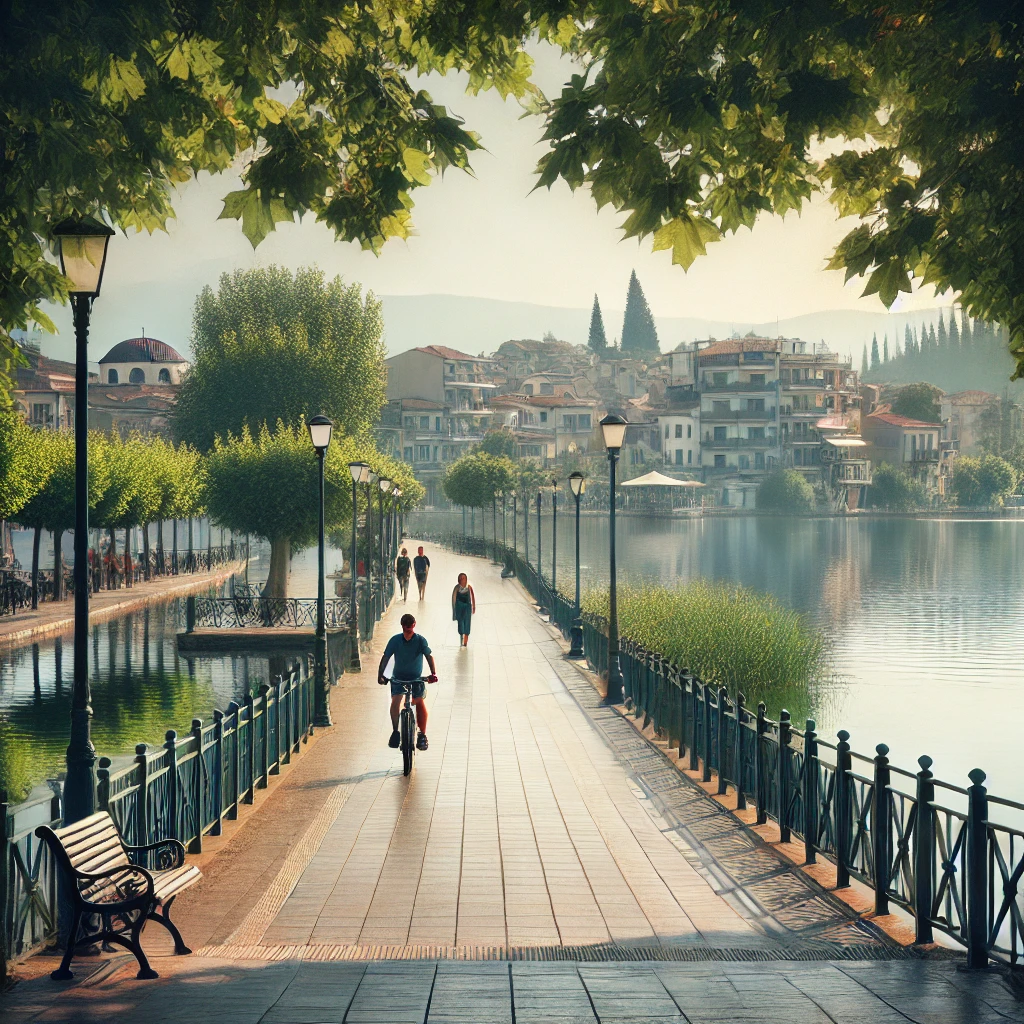
Participation is not a simple act, it is a mechanism that activates the dynamics of communities. At its core, participation is the tangible expression of collective responsibility. In a rapidly changing world, where cities are redefining their identity through the challenges of the climate crisis and urban development, participation is no longer a luxury. It is a necessity!
In Ioannina, a city that combines natural beauty with its historical identity, participation finds an excellent space for application. The lakeside space, the parks, the bike lanes, and the pedestrian streets are not just reference points. It is the field where residents, through their movement, can connect with the city and redefine their relationship with the environment and public space.
The act of participating in sports, whether it is running, walking, or cycling, is not limited to physical activity. It embodies a deeper cultural shift. It is the gradual transition from a culture of excessive dependence on the car to a culture that promotes human scale, interaction, and sustainability. When a citizen chooses to cross the city by bicycle or walk by the lake, they are doing more than an environmental act. It creates a new narrative for urban space.
Participation, however, cannot remain an individual choice. Institutional support and social acceptance are needed. Cities that have managed to integrate green development and sustainable mobility, from Barcelona to Amsterdam, have achieved this through systematic education, infrastructure, and, above all, a change in collective mentality. Participation, in this context, becomes a tool for reshaping the community.
Lake Pamvotis, the picturesque streets, and the public spaces of Ioannina are not merely points of physical activity. They are the vibrant cores where a shared identity is formed. Every step on the lakeside path, every bike ride, every sports event is not just an individual experience, but a collective act that brings people closer together
Participation in such activities goes beyond physical empowerment. It becomes a way to redefine our perception of urban space, to strengthen the sense of community, and to lay the foundations for a cultural change. Through these actions, the city transforms from a set of infrastructures into a living organism that connects people with the space, the environment, and each other.
It is important, however, to view participation realistically. It is not enough to encourage actions; we also need to address the obstacles. The absence of safe bike lanes, limited access to green spaces, and the lack of a coordinated policy for sustainable mobility are issues that require resolution. In these issues, participation also takes on an assertive character: it is the voice of the citizens demanding better conditions for everyone.
By participating, the person not only changes their own daily life; they influence the city as a whole. The act of the cyclist crossing the lakeside road is a hint at how the city could be in the future: less noisy, greener, more human. Ioannina has the potential to become a model for green development and mobility, not merely through infrastructure, but through a deeper connection of people with their city. And this connection starts with participation. Every step, every journey, every moment dedicated to the space is a statement: that the city is not merely a place to live, but a place to create, to breathe, and to belong.
Peter Lolis
Professor of P.E.
